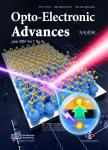Top-down control of bottom-up material synthesis@nanoscale
作者机构:Optical Sciences CentreSchool of ScienceSwinburne University of TechnologyHawthornVic 3122Australia WRH Program International Research Frontiers Initiative(IRFI)Tokyo Institute of TechnologyNagatsuta-choMidori-kuYokohamaKanagawa 226-8503Japan
出 版 物:《Opto-Electronic Advances》 (光电进展(英文))
年 卷 期:2023年第6卷第4期
页 面:1-2页
核心收录:
学科分类:07[理学] 08[工学] 070205[理学-凝聚态物理] 080501[工学-材料物理与化学] 0805[工学-材料科学与工程(可授工学、理学学位)] 0802[工学-机械工程] 0702[理学-物理学] 080201[工学-机械制造及其自动化]
主 题:synthesis printing inorganic
摘 要:In a recently published paper in Opto-Electronic Advances,Mangirdas Malinauskas and his colleagues at Vilnius University report on a new high resolution inorganic material synthesis pathway using 3D laser printing and calcination.3D metamaterials(beyond what exist in nature)emerge from research in high-resolution 3D polymerisation/printing where proportions of inorganic parts of a composit can be widely *** adding a high temperature annealing(HTA)post-fabrication step of sintering/calcination in air/oxygen flow2−5 after the 3D polymerisation,a new glass and/or ceramic 3D structure with nanoscale features and large down-sizing can be produced6 as shown in Fig.1.



